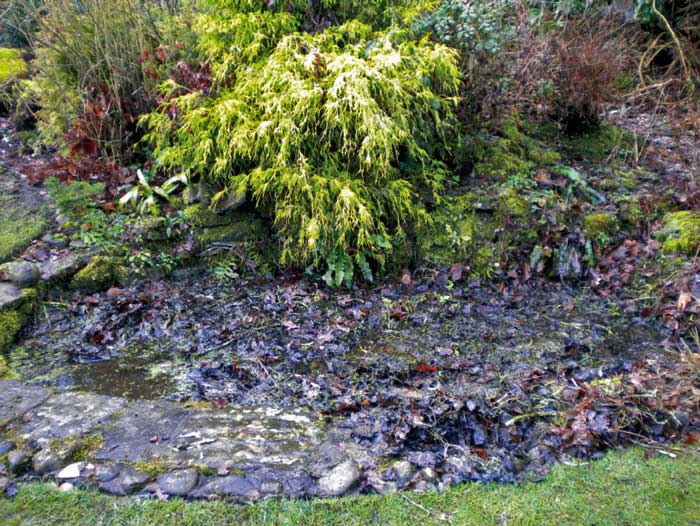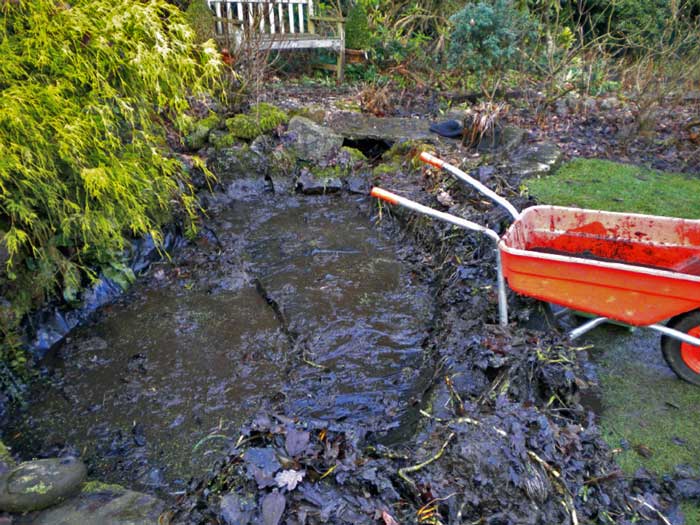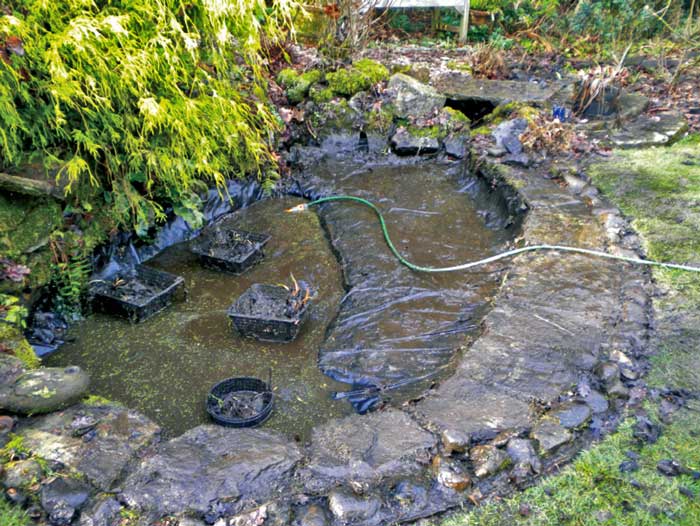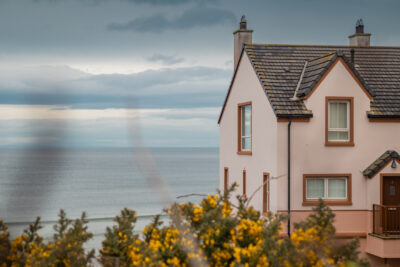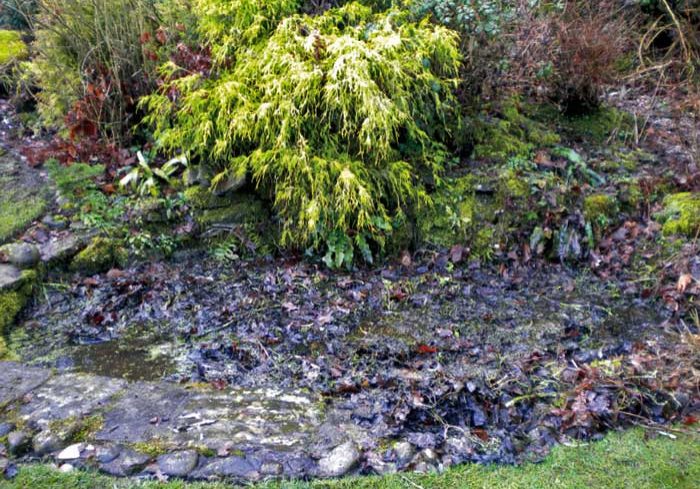
Pondering Over Ponds | Gardening with Geoff Moss
by Geoff Moss
Gardener’s Diary with Geoff Moss
“The only moss you want in the garden”
Now that we are getting through the worst of the winter and spring is on its way, it is a good time to look at one of the mainstays of the garden for wildlife – the pond.
We are going to look at both cleaning them out and the outlines of constructing new ones, because you may not have a pond in your garden to attract wildlife or simply provide a welcome oasis, or you may have one of those areas that used to be a pond and is now a dark mass of plants and mudfilled water where neither you nor wildlife particularly cares to go.
This of course is a more extreme view of a dirty pond so you may just need appropriate advice on how to clean your pond of the debris that tends to build up over time. Whatever your particular issue with your pond area we will tackle them in this article, so settle in and get ready to gather the facts you need…
We’ll start with the construction, and since it’s quite intricate I only have space to give the outlines of it. There are two distinct methods depending on what sort of pond you want. These are either a completely natural wildlife pond or a more contemporary garden pond. Keeping fish is a totally different ball game so I won’t be going into that particular area, but the construction methods do have similarities so after talking with a professional who can advise you on keeping fish you may be able to use some of the information here.
The first task for construction is to choose a suitable location for your pond or ensure the design for your garden has allowed for this. The position should generally be out of strong sunlight, as far away as possible from overhanging trees or other plants and in a position which is accessible for maintenance.
Don’t worry, though, if you cannot satisfy all three of these as it is rarely the case. Just do your best. Next you will need to decide on what depths and shelves the pond will have for plants and wildlife as this will help tell you what features the pond will have and how to construct it.
Your pond should have a deep point then shelves at mid-depth and shallow depth. This is mainly for being able to grow aquatic plants that require different depths but it also aids wildlife to move about in the pond itself. You should incorporate a beach where wildlife can enter and exit the pond and where birds can wash or get water.
Once you’ve worked out your depths and shelves you can calculate how big your liner should be. The calculation for this is – Width = total width of pond + 2 x deepest point and Length = total length + 2 x deepest point. For example – Width = 1m (total width) + 2 x 0.9m (deepest point) = 1 + 1.8 = 2.8m width and Length = 2m (total length) + 2 x 0.9m (deepest point) = 2 + 1.8 = 3.8m, so the liner I would need to buy will be 2.8m x 3.8m. You will also find that there is a lot of excess and this is normal because it is far better to have too much liner than too little.
To construct a natural pond you will need to choose your area and mark out the shape you want then start digging your hole. This can be from the edge in or the middle out but remember you will need your edges to be shallow with deeper shelves towards the middle and the middle being the deepest part. Once you have your general shape and depths you can take time to smooth the different levels and carve out the detail you require for the features you want in the pond.
The next step is to cover the sides with a layer of soft or building sand which can be patted down on the shallow contours of your pond because the sides should not be too steep at any point on this type of pond. This layer of sand is to prevent sharp objects piercing the new liner which is the next part to install, so simply spread the liner out over the whole area, making sure it is equally placed so there is excess on all sides then allow it to fall into the shape of the pond.
With an appropriate set of footwear (which should have no sharp edges that could damage the liner) step into the pond and push the liner into all the different levels and shelves of the pond.
Next, fill the pond with water. This is the best way of pushing the liner into all the contours of the pond and also gets rid of any air gaps underneath. Once the pond is full then you can begin to cut the excess off the liner and begin to hide the edges with stones, soil, flags or other decorative materials.
The construction method for a contemporary pond is much the same with a couple of main differences. The first is that the pond will normally be constructed as a container rather than being dug out. This means that the sides will often be vertical, hence another difference in construction which is that instead of using sand to line the hole you will need to use a thick fleece liner or similar material e.g. old carpet; which can be stood against or attached to the vertical sides. Simply cut the fleece liner to shape placing it on the bottom and sides of the pond then put the liner in on top and the force of the liner pushing outwards when full of water will hold it in place. The fleece liner can be glued or tacked in position if you need to, but ensure that any nails/screws have a smooth finish with the fleece liner so they don’t puncture the pond liner. Lastly, follow the previous instructions for fitting the pond liner then it can be held in position with the same material as it was built with e.g. bricks, stone.
The easiest but messiest job with ponds is the cleaning of them, but it is also an essential part of maintenance so here’s how to do it.
Start by emptying any water out of the pond either using a pump or simply bailing it out by bucket. Ensure that where you put the water is away from any run-off area where it could flow back into the pond!
Once the pond is empty you will need to remove and tidy up any plants that you wish to keep then you will be left with the ‘gunk’ at the bottom of the pond which should be scooped out and placed on the garden near the pond so that any creatures (usually plenty of frogs) can get back into the pond easily.
Again, for removing the debris, ensure you use implements that have blunt edges so you don’t pierce the liner. Next give the pond a swill with clean water and remove the mixture to get any remaining debris out of the pond. This is because the ‘gunk’ could easily have rotting debris in it, which is unhealthy for your pond. Then it is simply a case of re-filling the pond to the original depth or a suitable depth if the original water line had dropped. Now place your plants carefully back in the pond in the correct places/depths.
I hope you have been able to gain some insight from our brief tour of pond work, however if you would like to know more you can easily contact me through my website. It just remains to say the most important bit – I’m Geoff Moss – the only moss you want in the garden.’

